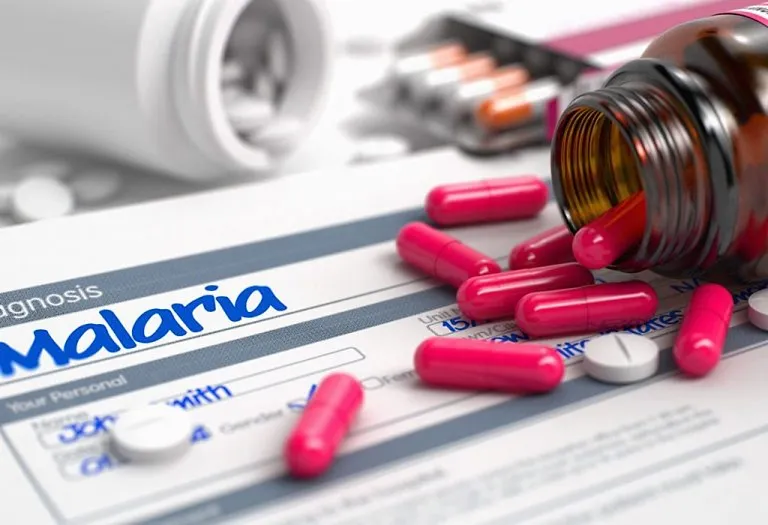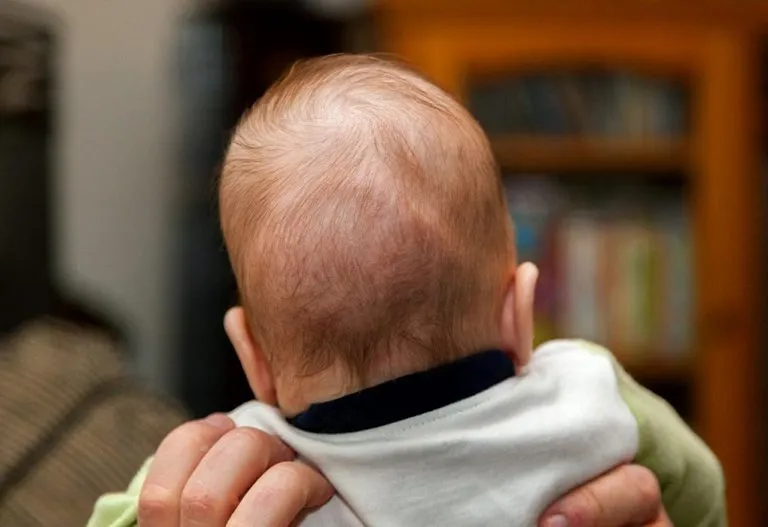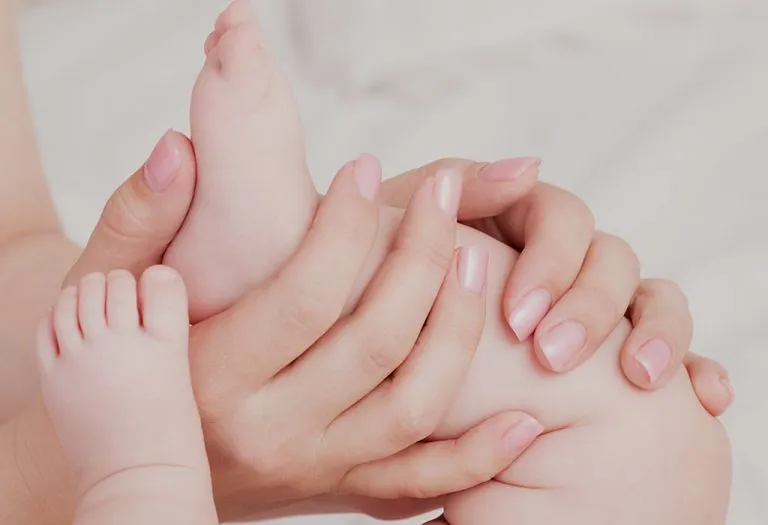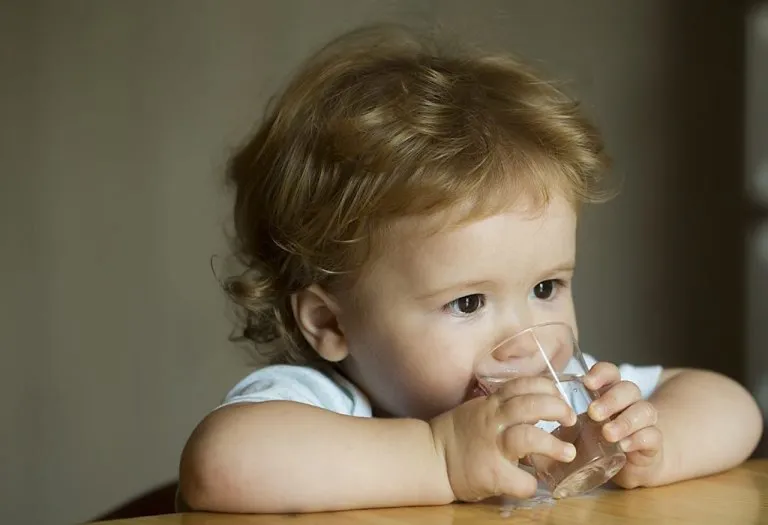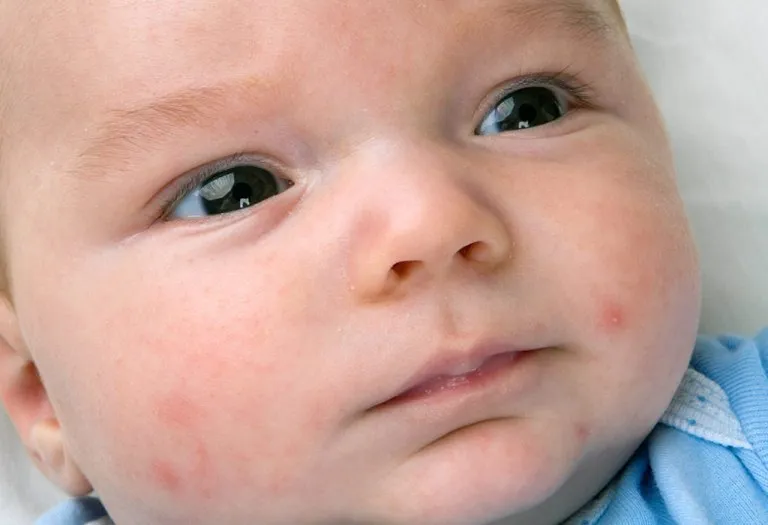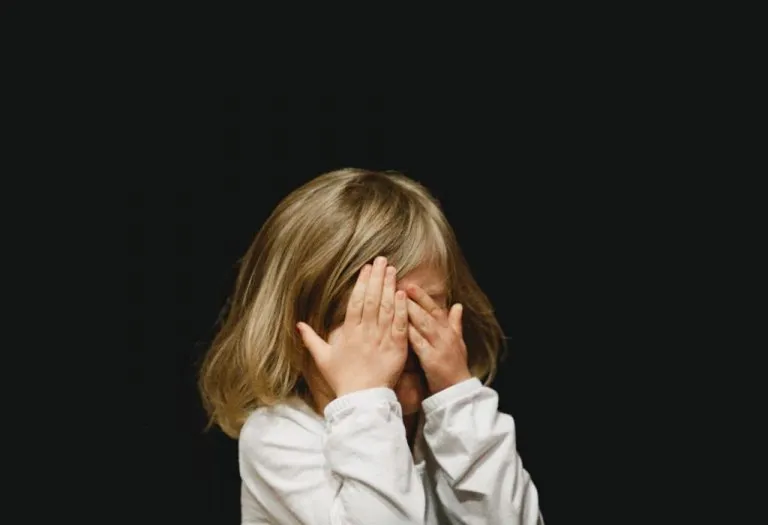Malaria in Children – Symptoms, Treatment and Prevention

Malaria is a serious and potentially life-threatening illness that primarily affects young children and adults in tropical regions. It is caused by the bite of an infected female Anopheles mosquito, which transmits the Plasmodium parasite into the bloodstream. Malaria symptoms in kids often include high fever, chills, sweating, fatigue, and flu-like symptoms in babies and toddlers (1). If left untreated, malaria can progress rapidly, leading to dangerous complications. Early diagnosis and proper medical care are crucial for recovery.
To reduce the risk of infection, healthcare professionals recommend following the “ABCD” method for malaria prevention. This stands for ‘A’wareness of risk areas, ‘B’ite prevention through mosquito nets and repellents, ‘C’hemoprophylaxis (taking prescribed antimalarial medication), and ‘D’iagnosis and treatment at the first sign of symptoms.
Read on to learn more about malaria in kids, including how it spreads, common symptoms, diagnostic methods, treatment options, and effective prevention tips.
What Is Malaria?
Malaria is a life-threatening mosquito-borne disease caused by the parasite species Plasmodium. This parasite infects the Anopheles mosquito, which feeds on humans. The female mosquitoes are the carriers of the parasite. These mosquitoes mostly bite between dusk and dawn.
Malaria breaks down the immune system in the body and affects children by stunting their development. The disease is commonly found in tropical regions. In some children, it causes mild illness, while for others, it can prove fatal.
Types of Malaria
Malaria is caused by different species of the Plasmodium parasite, each varying in severity and geographic distribution. There are mainly five types of Plasmodium that cause malaria, and this includes a new form which was discovered recently. They are:
- Plasmodium Falciparum (P. falciparum): This is mostly found in tropical and sub-tropical areas. It causes a majority of the severe cases associated with malaria.
- Plasmodium Vivax (P. vivax): This is mostly found in Asia and Latin America. It causes milder symptoms compared to P. falciparum. It is known to live for years in a dormant stage, thus causing relapses.
- Plasmodium Ovale (P. ovale): This is uncommon and mostly found in the Pacific islands and Western Africa.
- Plasmodium Malariae (P. malariae): This one is relatively rare. It is found in western Africa and is known to cause chronic infections.
- Plasmodium Knowlesi (P. knowlesi): This recently discovered species is rare and exists in Southeast Asia. It has the potential to progress from a benign case to a severe one rapidly.
How Does Malaria Spread in the Bodies of Babies and Toddlers?
According to Mayo Clinic, Malaria is caused by a parasite called ‘Plasmodium’, which is carried by the Anopheles mosquito. It spreads in young children and adults through the bite of the parasite-infected female mosquito (2).
Apart from mosquito bites, other causes of malaria include blood transfusion or sharing needles. The different ways of transmission of malaria infection are as follows:
1. Mosquito Bite
- When an uninfected Anopheles mosquito bites a malaria-infected person, it sucks blood containing the microscopic parasites of malaria and gets infected.
- When this infected mosquito bites another person, it transfers the infection to their bloodstream.
- The parasite travels to the host’s liver, where it grows and multiplies. Often, it stays there, dormant for several years before becoming active.
- When these parasites mature, they leave the liver and enter the bloodstream of the host.
- Once the parasites enter the bloodstream, they infect and damage the red blood cells. This is when the symptoms of malaria appear.
2. Blood Transfusion
As the parasite which causes malaria is carried by red blood cells, it may even be transmitted through organ transplant, blood transfusion or infected syringes.
3. Organ Donation
Like blood transfusion, malaria may be caused by organ donation, too. If an organ donor is infected with malaria, then the person receiving it will be affected as well.
4. Shared Needles
Sharing needles makes your body susceptible not only to malaria through blood transfusion, but also to other ailments.
5. Congenital
A pregnant woman infected with malaria may pass on the infection to her unborn child before or during delivery. This is termed ‘congenital malaria’.
The malaria parasite has an incubation period during which it remains in the host’s body. This is the period between being bitten by the mosquito and the appearance of symptoms. The duration can be anywhere from 10 days to 4 weeks after the infection. The incubation period for malaria differs based on the type of microbe and is listed below:
- P. falciparum: 9 to 14 days
- P. vivax: 12 to 18 days, but some strains may incubate for 8 to 10 months or even longer
- P. ovale: 12 to 18 days
- P. malariae: 18 to 40 days
- P. knowlesi: 9 to 12 days
Signs & Symptoms of Malaria in Children
Babies affected with malaria may exhibit a sudden change in behaviour like drowsiness, irritability, restlessness and lethargy. Many of them even complain of nausea and diarrhoea. Some common symptoms of malaria in children are (3):
- High Fever: A high temperature is not necessarily a normal fever; it may indicate a serious infection or disease, too. Besides other possible ailments, it may also be the initial symptom of malaria if it is accompanied by chills or shivering.
- Vomiting: Malaria can cause vomiting in children. The way the body reacts depends on the child’s sensitivity to the infection and its severity.
- Headaches: Headaches are common among children and adults alike, but if they are accompanied by other symptoms of malaria, they need to be taken seriously.
- Poor Appetite: Poor appetite may sometimes be a result of malaria. However, before you jump to a conclusion, do look for the presence of other symptoms of malaria, too.
- Stomach Pain: Many children, when infected with malaria, complain of stomach pain and nausea. Since the infection begins in the liver, this is the area which is affected first.
- Irritability and Drowsiness: Children tend to be cranky and moody when they are tired or ill, but if they are consistently irritated and drowsy, it may be an indication of a serious problem.
- Cold and Cough: Cold and cough are quite common in children, but you should check for the presence of any other symptoms with it. If they are followed by fever or any of the other signs, it would be a good idea to consult your doctor.
- Sleeplessness: Malaria can cause different symptoms in different children. In some, it causes drowsiness, while in some, it can be a source of insomnia.
- Weakness: If your child is feeling weak, it is better to get him checked. A quick blood test is all it needs to confirm or eliminate malaria as the cause, and early detection ensures early recovery.
How to Reduce the Chances of Malaria in Children?
Mosquitoes are the prime cause of malaria. Hence, it is necessary that you keep your kids away from them. Babies are less prone to being affected for the three months of their lives as they are protected by the immunity the mother builds in them during pregnancy. As they grow older, however, their immunity is built from scratch, making them vulnerable to this disease. You should prepare for baby malaria prevention before the onset of infection by taking the following precautions:
1. Keep your surroundings mosquito-free
Keep your home and surroundings free from stagnant water, as it is a breeding ground for mosquitoes. You may add a few drops of kerosene oil to air coolers, small ponds, open drains, and other places where water gets collected to deter mosquitoes from laying eggs. Adding some citronella oil to the water used for mopping will also keep flies and mosquitoes away.
2. Use mosquito nets
Make use of age-appropriate mosquito repellents and mosquito nets while sleeping. You may also apply a citronella oil-based cream on the exposed area of your child’s skin, as it will keep the mosquitoes away.
3. Use mosquito meshes
You may install mosquito meshes to cover your doors and windows. Choosing detachable ones, or the ones with Velcro, makes cleaning an easy task.
4. Dress your child in the right colours
It is believed that dark colours attract mosquitoes. It is thus advisable to dress your baby in light-coloured clothes that cover them well.
5. Use air conditioning
Mosquitoes usually cannot thrive in cold temperatures. So, to minimise the chances of mosquito bites, keep your child in cool or air-conditioned areas.
6. Avoid mosquito havens
When going to parks, ensure that your child stays away from bushes and hedges, as they attract mosquitoes.
7. Get your surroundings fumigated regularly
It is recommended that you get your home and surroundings fumigated regularly to kill mosquitoes. You may also burn some coconut shells, husks, or neem leaves outside your house and in the neighbourhood. This will prevent the breeding of mosquitoes.
Sometimes, despite taking these precautions, your baby could still get infected. If you notice any of the symptoms we mentioned above, you should visit a paediatrician immediately to avoid severe health complications. Let’s take a quick look at them, too, before we finally discuss the diagnosis and treatment for malaria.
Complications of Malaria in Kids
There are possibilities of malarial infections leading to complications like convulsions, loss of consciousness, and dehydration. In such cases, the affected child should be hospitalised immediately. They may need to be provided breathing assistance and be kept on fluids. High-risk damage to the body caused by malaria includes (4):
1. Brain Tissue Injury
In some cases, where malaria affects the brain, it may cause swelling in the brain or lead to permanent brain damage or coma
2. Seizures (Impaired Consciousness) or Cerebral Malaria
Cerebral malaria is the primary cause of death in the case of severe P. falciparum infection. The symptoms of this complicated infection include seizures to an unpredictable extent.
3. Renal Impairment
In some rare cases, malaria leads to acute renal failure (ARF), which is mostly caused by the P. falciparum infection. Sometimes, even P. Vivax and P. malariae contribute to renal impairment in malaria patients. It is most common in non-immune adults and older children.
4. Anaemia
This is a condition where the red blood corpuscles are incapable of carrying sufficient oxygen to the body’s organs. It causes a feeling of both weakness and drowsiness. The destruction of red blood cells by the malaria parasite can lead to severe anaemia.
5. Pulmonary Oedema
At times, malaria causes fluid retention in the lungs. This condition is called pulmonary oedema and can cause difficulty in breathing.
6. Low Blood Sugar
This is a serious complication often caused by a severe infection. It can also lead to coma.
7. Yellow Discolouration of the Skin
Malaria may cause jaundice, which is characterised by a yellow tint to the skin. This happens if red blood cells are damaged or lost.
8. Splenic Rupture
An enlarged spleen is a common manifestation of malaria. But in some life-threatening situations, a severe infection by P. vivax may result in a splenic rupture.
9. Haemoglobinuria (Black Water Fever)
In this condition, the P. falciparum results in the bursting of a vast number of red blood cells. Haemoglobin from these cells is then passed to the urine. This makes the urine turn dark red, and in some cases, almost black.
10. Hypothermia
This is a condition where your child’s temperature drops below normal. It can lead to the formation of blood clots, which pose the risk of tissue death or organ failure.
11. Multiple Organ Failures
In some cases, severe P. falciparum can cause multiple organ failures. This includes kidney, liver, brain or lung failure, and can be fatal.
These were the complications of malaria in children.
Diagnosis of Malaria
Malaria can be classified into three types:
- Benign (uncomplicated)
- Malignant (severe)
- Cerebral malaria
These are described in brief below:
1. Mild (Uncomplicated) Malaria
Mild malaria is considered to be uncomplicated malaria and is considered benign, as it is easily treated. Often, it is hard to diagnose this kind of malaria in infants because the clinical reports are similar to those of other diseases like sepsis. It may be caused by all strains of the Plasmodium parasite.
2. Malignant (Severe) Malaria
Malignant malaria can quickly progress to severe malaria and even prove fatal. The strain P. falciparum causes this type of malaria. Children are the most vulnerable to it as they have low immunity to the parasite. The main symptoms of malignant malaria include breathing difficulties, low blood sugar and severe anaemia.
To diagnose it, the doctor may check for the presence of flu-like symptoms in your child and prescribe a blood smear test. This test determines the presence of malarial parasites.
If the blood smear test has a positive result, the doctor may suggest a liver test. This test checks the functioning of the liver to determine whether it is healthy or not.
The complete blood count (CBC) tests of your child help to see whether the red blood cells have been damaged.
3. Cerebral Malaria
This kind of infection is caused only by Plasmodium falciparum. In this condition, there may be swelling in the infected child’s brain. It manifests severe symptoms and may lead to fatal consequences.
Malaria Vaccine for Kids
No vaccine has yet been developed for treating the infection caused by the malaria parasite. The malaria parasite Plasmodium is a complex organism and has a very complicated life cycle. Besides, the convoluted immune responses protecting humans against malaria are still not completely understood. Many scientists from all around the world are working on developing an effective vaccine for malaria. To date, RTS, S/AS01 is the most advanced option available and is considered to be a viable vaccine for malaria.
Treatment of Malaria in Children
Treatment for malaria mainly involves administering medicines and ensuring a healthy diet. Doctors usually prescribe antimalarial medications like quinine or chloroquine based on the type of malaria and the severity of the symptoms. Meanwhile, there are several measures you may adopt to help your child as soon as you see any symptoms of malaria. These include the following:
1. Plenty of Rest
Diseases like malaria can cause weakness and severe fatigue. It is important to ensure that your child gets plenty of rest if infected.
2. Increased Intake of Nutritious Food and Water
When fighting malaria or any disease, it is important that the body is healthy and strong. Hence, you need to feed your child a healthy diet.
3. Sponging and Medication to Reduce Fever
It is advisable to monitor the child’s temperature. In case of fever, make sure you sponge regularly to bring down the temperature. Consult the doctor before administering paracetamol or any fever medicine to your child.
4. Antimalarial Drugs
In case of severe infection, the child may need to be admitted to the hospital. He may be prescribed antimalarial medications that may be given either orally, through injection or intravenously. Here are some of the antimalarial medicines the doctor would issue depending on the severity of the infection and resistance to chloroquine (5):
- Chloroquine (Aralen)
- Mefloquine (Lariam)
- Doxycycline (Vibramycin)
- Atovaquone (meprin)
- Proguanil (Malarone)
- Primaquine
- Quinine
- Hydroxychloroquine (Plaquenil)
- Artemether and lumefantrine (coartem)
- Clindamycin (Cleocin)
Long-Term Effects of Malaria and Recovery Time
Malaria is a disease that still requires a lot of research so that a lasting cure can be found or it can be eradicated entirely. The malarial parasites P. ovale and P. vivax often hide in the liver and stay dormant for weeks, months and even years. This means it is possible that the infection may relapse at a later date. Here are some possible long-term effects of malaria:
- The reviews of the American Journal of Tropical Medicine and Hygiene suggest that malaria in children affects their general cognitive and behavioural development.
- As per the details published on the NCBI site (The National Center for Biotechnology Information, USA), cerebral malaria may cause mental health disorders in children as a result of an ischemic neural injury (restriction in blood supply to tissues).
- Malaria can also badly affect the immune system, making children prone to diseases throughout their childhood.
Prevention of Malaria in Children
The cases of malaria can be prevented in children by undertaking easy-to-do practices at home (6):
- Get rid of objects that could hold water in the open. During rainy seasons, keep a check on stagnant water in your home, which could breed mosquitoes.
- Use child-safe mosquito nets and repellents.
- Fix nets on doors and windows of the house to prevent mosquitoes from entering
- Dress your children in fully covered clothing to avoid mosquito bites.
- Avoid stepping outside during the peak hours when mosquitoes bite the most, before and after sunset
- If you are travelling with children to places with malaria prevalence, consult a doctor in advance for antimalarial medications to prevent malaria.
Recovery From Malaria
Recovery from malaria depends on various factors like the type of malaria, the promptness of the treatment and the immunity of the patient. For example, pregnant women and children have reduced immunity and, hence, suffer for a longer duration. In addition, the type of malaria determines the severity and length of the infection. In the case of P. malariae, the less rapidly growing form, it may persist for longer but does not cause any fatal disease. For less severe malaria, if the treatment is initiated immediately, the child can recover within two weeks.
FAQs
1. Is malaria contagious?
Since malaria is contracted through the bite of an infected mosquito, it cannot be spread through person-to-person contact. Hence, it is not contagious. As the infection spreads through blood, one may get malaria if they get infected blood through the transfusion of blood. Secondly, in case of pregnancy, if a pregnant mother gets malaria, she could pass the infection to her baby in the womb before or during delivery, which is known as congenital malaria.
2. What is the duration for malaria to surface?
It usually takes 10 days to one month for malaria to surface in an individual after they are infected, with the first signs of shivering and chills.
3. Is fever a necessary indication of malaria?
It is possible for an individual to be malaria positive with or without fever. Therefore, it is important for doctors to diagnose malaria with blood tests.
4. What type of foods should a malaria-infected person avoid?
A person infected with malaria should avoid heavy fried foods, processed foods like burgers, pizzas, desserts, sodas, cakes, etc., and high-fibre foods, including cereals, grains, and leafy vegetables.
Malaria fever in children can be dangerous if untreated, often causing high temperatures, chills, and fatigue, so early diagnosis is crucial. If you suspect any signs of malaria in your child, please consult a doctor for early diagnosis and treatment.
References/Resources:
4. Indian Pediatrics – Diagnosis and Management of malaria in Children
5. Oxford Academic – Diagnosis and Treatment of Malaria in Children
6. Nemours Kids Health – Malaria
Also Read:
Chikungunya in Kids
Dengue Fever in Children
West Nile Virus in Kids
Home Remedies of Dengue for Kids
Was This Article Helpful?
Parenting is a huge responsibility, for you as a caregiver, but also for us as a parenting content platform. We understand that and take our responsibility of creating credible content seriously. FirstCry Parenting articles are written and published only after extensive research using factually sound references to deliver quality content that is accurate, validated by experts, and completely reliable. To understand how we go about creating content that is credible, read our editorial policy here.






